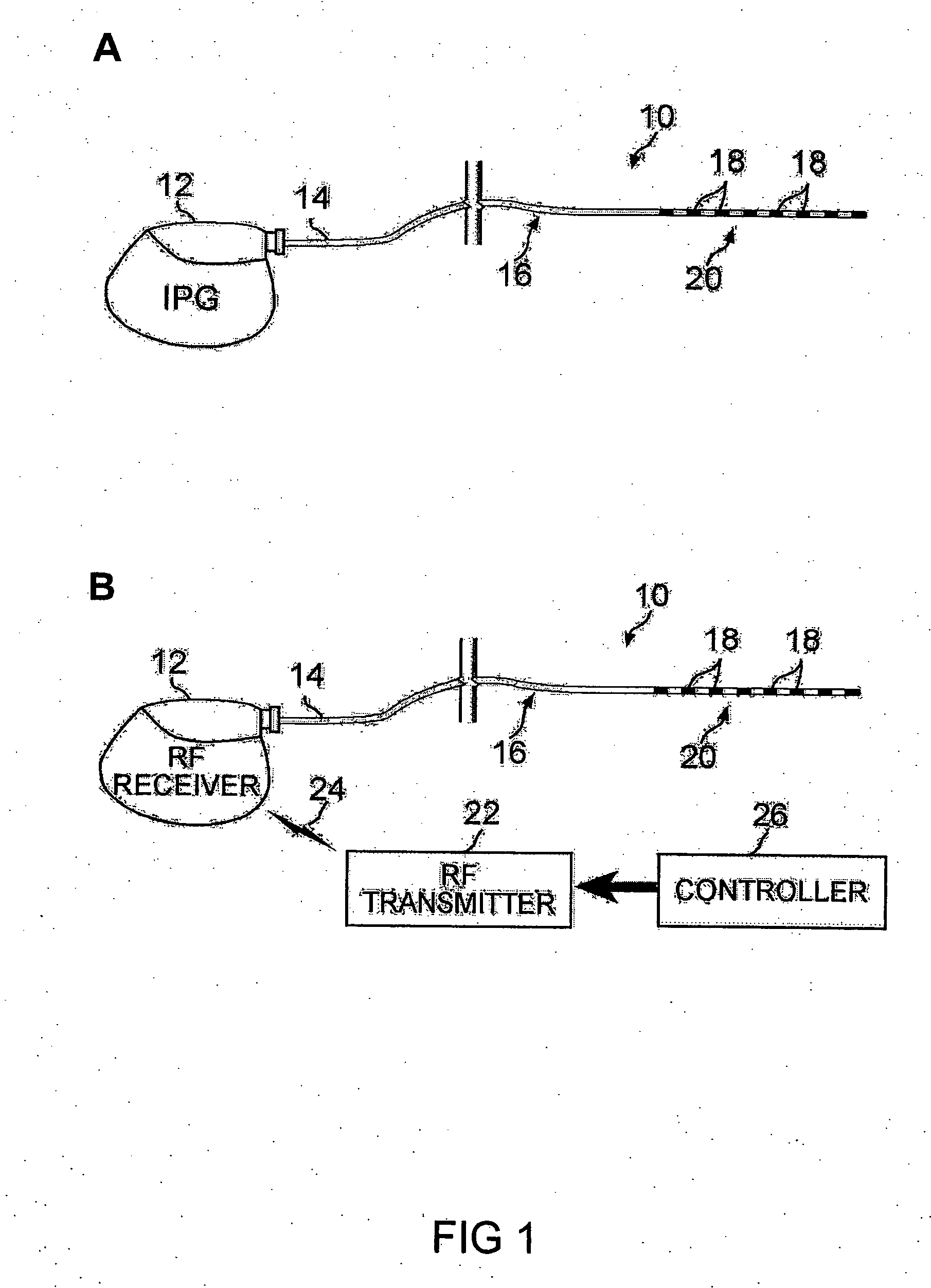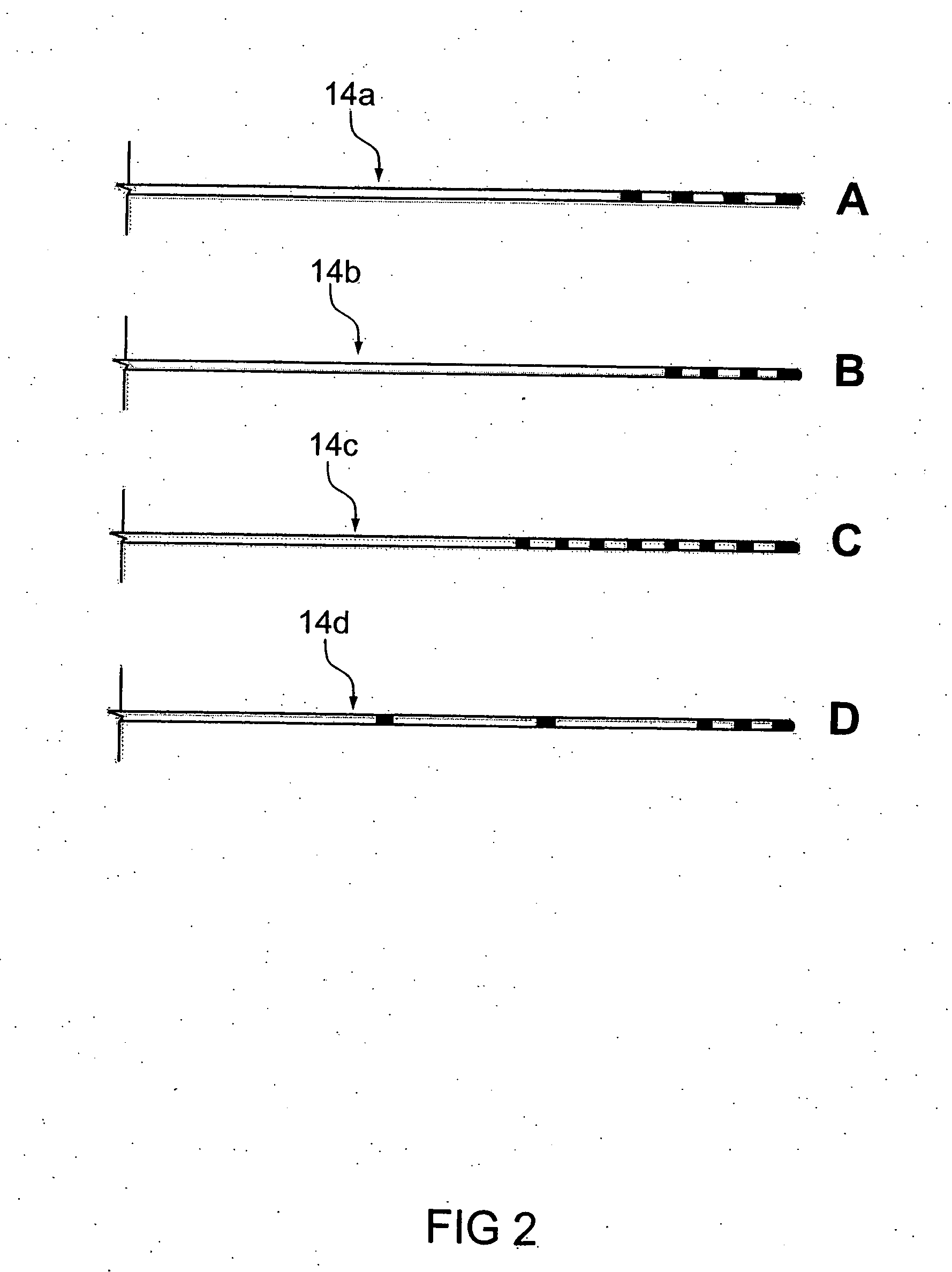Method of treating cognitive disorders using neuromodulation
a neuromodulation and cognitive technology, applied in the direction of head electrodes, therapy, internal electrodes, etc., can solve the problems of side effects, ineffective clinical use and other types of cognition disorders, and various changes in other neurological functions
- Summary
- Abstract
- Description
- Claims
- Application Information
AI Technical Summary
Benefits of technology
Problems solved by technology
Method used
Image
Examples
example 1
Patients
[0108] This pilot study included six patients with treatment resistant major depression (TRD) referred by mood disorder specialists (Table 1). The clinical diagnosis of major depressive disorder, major depressive episode (MDD-MDE) was independently confirmed by two psychiatrists and a research coordinator using the Structured Clinical Interview for DSM-IV (First et al., 2001). Patients were selected for surgery because they were resistant to all available therapeutic options. All had failed to respond to a minimum of four different classes of antidepressant medications, prescribed at maximal tolerable doses. Failed treatments included SSRI, venlafaxine, bupropion, monoamine oxidase inhibitor, and tricyclic antidepressants, as well as augmentation strategies using lithium, atypical antipsychotics, and anticonvulsants. Five of the six patients had received electroconvulsive therapy and all had attempted cognitive behavioral therapy without clinical improvement.
TABLE 1Patien...
example 2
[0109] The general surgical procedure for the implantation of DBS electrodes has been previously described (Lang and Lozano, 1998). A stereotactic frame (Leksell G; Elekta, Inc., Atlanta, Ga.) was affixed to the patient's head on the morning of surgery and preoperative MR images were obtained (Signa, 1.5 tesla; General Electric, Milwaukee, Wis.). The x, y, and z coordinates of the anterior (AC) and posterior commissures (PC) were determined using axial 3D T1 MR images. To target the subgenual cingulate white matter target, a midline T2 sagittal image was chosen and the cingulate gyrus below the genu of the corpus callosum was identified (FIG. 4, row 1) (Schaltenbrand and Wahren, 1977). A line was traced from the most anterior aspect (genu) of the corpus callosum to the anterior commissure and the midpoint was selected (FIG. 4, row 2, left). The T2 coronal section correspondent to the plane of this midpoint was identified and the coordinates of the transition between the gray...
example 3
Post Operative Findings: Short-Term Stimulation Effects
[0114] Post operative MR imaging confirmed the placement of the DBS electrodes within the subgenual cingulate white matter (Cg25WM) bilaterally as targeted. (FIG. 4, row 3: E / F). During the 5 day post-operative period, and prior to placement of the pulse generator, daily short sessions of DBS were used to refine final contact selection and stimulation parameters. Systematic testing of individual and paired unilateral and bilateral contacts was performed with a variety of parameters (monopolar [contact anode; case cathode] and bipolar, pulse width of 30 to 250 microseconds, frequency of 10 Hz to 130 Hz, progressive increase in voltage from 0.0 to 9.0 Volts) as has been previously described for other DBS applications (Benabid, 2003; Davis et al., 1997; Lang and Lozano, 1998). Acute behavioral changes were again observed during these test sessions. Reproducible improvements in interest, motor speed, activity level, and PANAS score...
PUM
 Login to View More
Login to View More Abstract
Description
Claims
Application Information
 Login to View More
Login to View More - R&D
- Intellectual Property
- Life Sciences
- Materials
- Tech Scout
- Unparalleled Data Quality
- Higher Quality Content
- 60% Fewer Hallucinations
Browse by: Latest US Patents, China's latest patents, Technical Efficacy Thesaurus, Application Domain, Technology Topic, Popular Technical Reports.
© 2025 PatSnap. All rights reserved.Legal|Privacy policy|Modern Slavery Act Transparency Statement|Sitemap|About US| Contact US: help@patsnap.com



